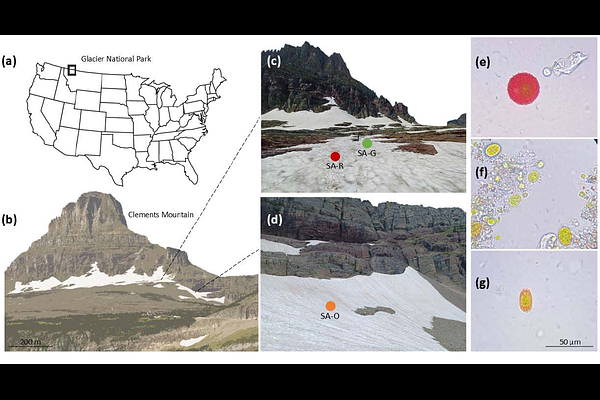Taxonomy-driven variations in snow algae color modulate albedo and energy balance in a single snow patch

Taxonomy-driven variations in snow algae color modulate albedo and energy balance in a single snow patch
Almela, P.; Elser, J. J.; Zmuda, A.; Niehaus, T.; Hamilton, T. L.
AbstractIn this study, we examined the reflectance, pigment composition, and community composition of three snow algae blooms showing distinct colors in the same snowfield in Glacier National Park (USA). Each color bloom was dominated by a different algae, each exhibiting a unique pigment signature but with astaxanthin as the predominant pigment across all three blooms. The spectral reflectance of red snow algae was consistently lower than that of green algae, while orange algae had intermediate reflectance values. Specifically, red algae reduced reflectance by approximately 55% across the PAR range, while green algae reduced reflectance by 25%. Red algae also demonstrated the highest radiative forcing, double that of green algae, leading to increased energy re-emission into the surrounding environment, which likely contributes to the localized melting of adjacent ice crystals. The high absorbance around 680 nm in cells with high astaxanthin content, such as the orange algae, suggests that semi-automatic detection methods could effectively identify these algae, as their spectral features remain distinct despite the presence of secondary carotenoids. Our data demonstrate the impact of snow algae taxonomic and pigment composition on the radiative balance of snowfields, underscoring taxonomy as a key determinant of bloom color under similar environmental conditions